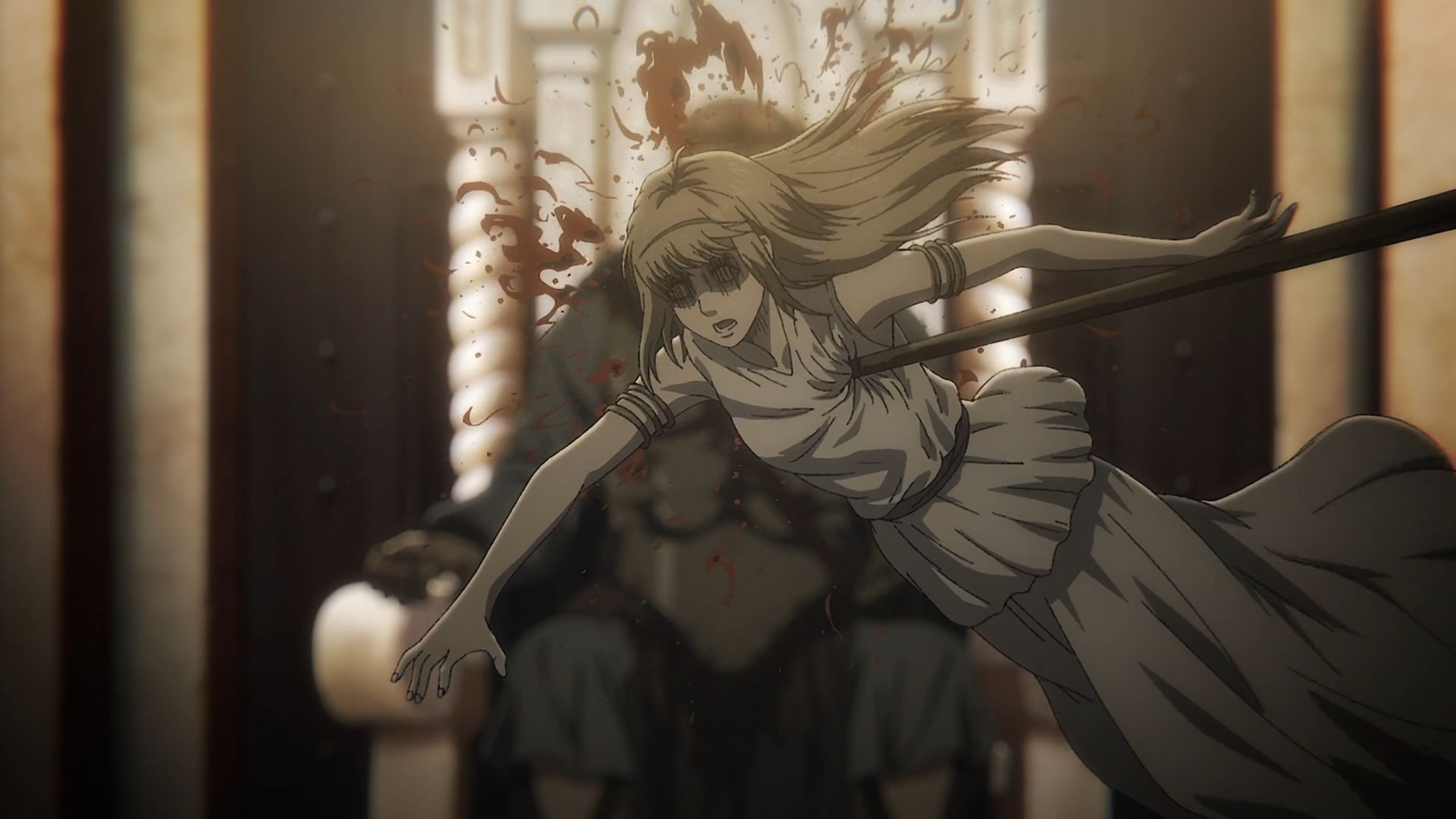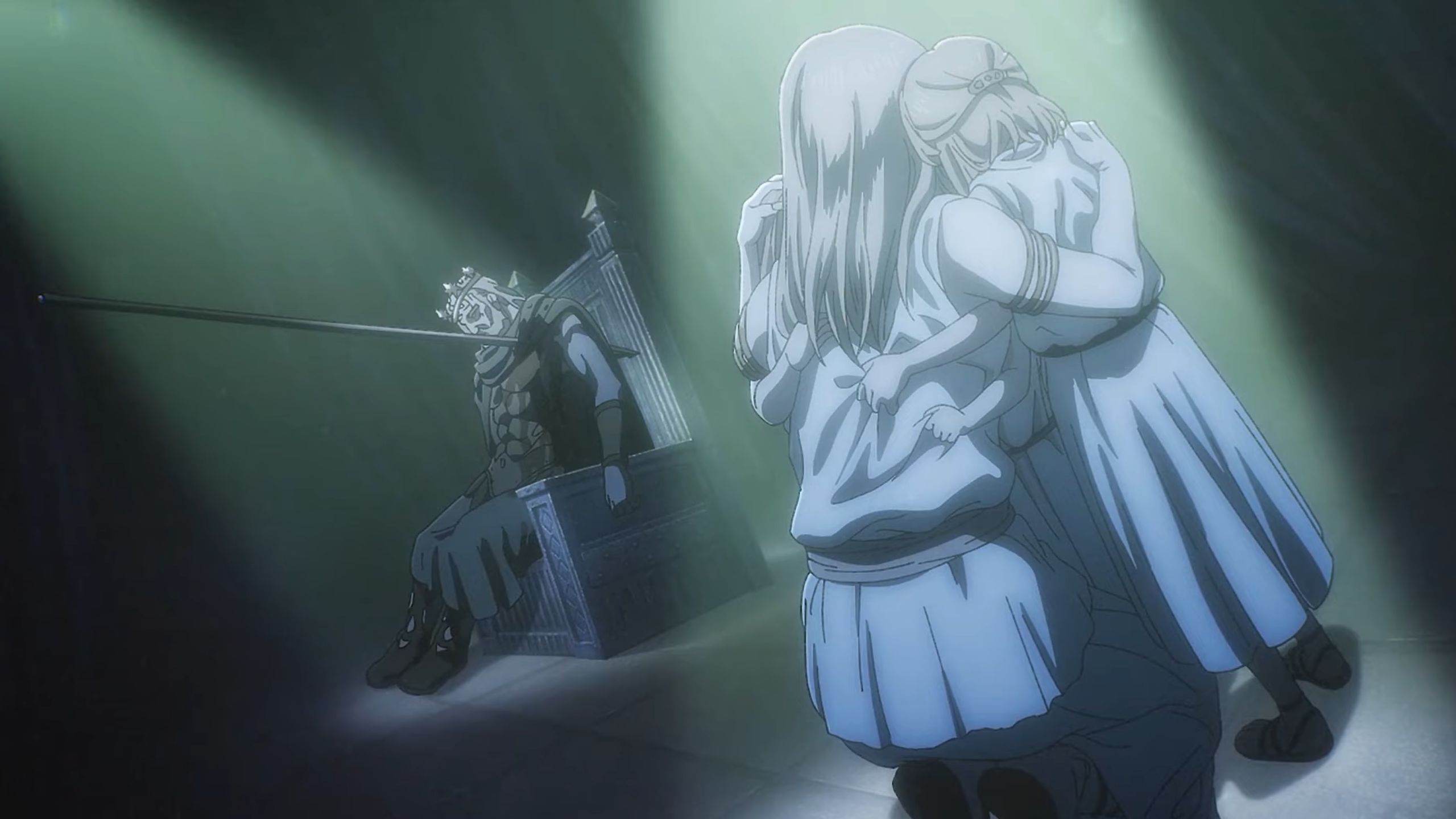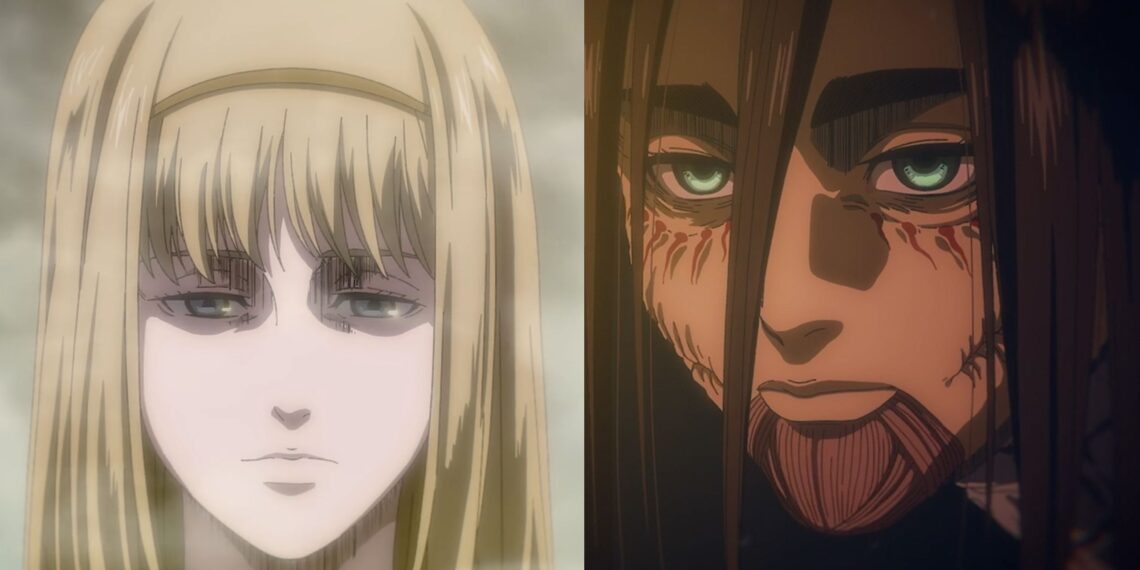Ymir Fritz, the First Titan of Eldia, played a surprisingly major role in the final special episode of Attack on Titan, which left many fans theorizing as to what the implications of Mikasa being Ymir’s choice towards freedom.
The hugely successful anime series Attack on Titan has finally come to an end after ten breathtaking years, with the release of its final episode on 5 November 2023. The theory dives into heavy spoilers, especially the ending of the anime series, and attempts to make sense of the very open ending that Hajime Isayama left for the fans.
In a series filled with mind-boggling plot twists, the final episode took the fandom by storm, as Eren revealed to Armin about Founder Ymir’s main goal: “For two thousand years she sought for someone who will free her from her suffering and that someone appeared. It was Mikasa”.
Eren Yeager thought he was the mastermind behind the War for Paradis and the Rumbling, who obtained the powers from the Founding Titan to gain freedom from the domination of Marley. However, it was actually Ymir who was controlling every action towards the “result” Mikasa brought by killing Eren.

The Origins of Founder Ymir
Ymir was a slave to the Eldian King Fritz, who burned down her entire village and cut off the tongues of all the survivors so they could work for him. One day, some pigs escaped a pen, and the blame was put on Ymir, who was punished by being hunted down for sport.
Heavily wounded, she found a chasm at the base of a tree for shelter, but unaware of the sinkhole beneath it, she fell down into a pool of liquid. There, a mysterious spine-like creature fused with her and turned her into the first Titan.
Though gifted with immense power, Ymir returned to King Fritz and decided to use her Titan form to build bridges and shift mountains for him. In return, Fritz made Ymir his concubine and bore three daughters with her, named Maria, Rose, and Sheena.
Thirteen years after acquiring the power of the Titans, Ymir died by jumping in front of King Fritz to save him from an assassination attempt by a Marleyan prisoner.
The Eldian King forced the daughters to eat her corpse so that Ymir’s powers could continue through them, and this began the vicious cycle of the Titans, who had to eat their predecessor’s spine to gain their powers.

Why Founder Ymir Controlled the Ending
Mikasa is an Ackerman, a clan that gains inhumane power to protect and serve a host they are bound to. Her “awakened power” is connected to the protagonist, Eren, whom she not only loves but also unconditionally protects.
Ymir, just like Mikasa, was also bound to that unconditional desire, which is why she followed the wishes of King Fritz for two thousand years. Thus, Mikasa’s act of overcoming her desires in order to kill Eren is the “result” Ymir wanted so she could break away from the shackles that bound her to King Fritz.
When Mikasa, carrying the decapitated head of Eren, comes face to face with Founder Ymir, they both finally gain their freedom from their beloved, portrayed by a final image in which King Fritz is killed by a spear while Ymir tends to her daughters.
Rejecting King Fritz’s orders, Ymir thus ends the vicious cycle by taking away Titan’s powers from the world.
This theory is also supported by Eren, who told Armin that Ymir only allowed him to see definite parts of the past and the future and that he was not allowed to see Mikasa’s future.
However, this theory suggests that the War for Paradis, which killed 80 percent of the population, was only done to reach an ending of love. Although this might sound anti-climactic, the theory perfectly aligns with Isayama’s vision for the series.
By shifting the end of the central plot from the universal theme of War to a more personal subject of Love, Attack on Titan ends on the note that conflict is never-ending and that destruction and bloodshed will continue to exist as long as humanity does.
Attack on Titan bids a befitting farewell to all the central characters, especially Eren, Armin, and Mikasa, while also leaving an open ending filled with both a pessimistic view of Death and a hopeful vision for Life.




